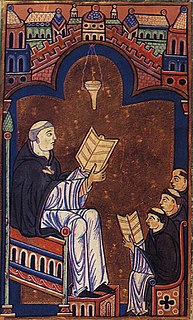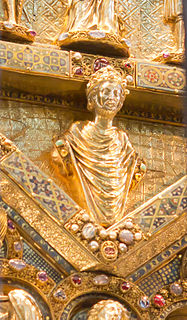 W
WEkkehard of Aura was the Abbot of Aura from 1108. A Benedictine monk and chronicler, he made updates to the World Chronicle of Frutolf of Michelsberg adding important German history between 1098 and 1125 during the reign of Emperor Henry V, in which he sided strongly with the papacy in the Investiture Controversy. He was a participant in the Crusade of 1101, and provided important source material for the Rhineland massacres of Jews and for the First Crusade.
 W
WHelmold of Bosau was a Saxon historian of the 12th century and a priest at Bosau near Plön. He was a friend of the two bishops of Oldenburg in Holstein, Vicelinus and Gerold, who did much to Christianize the Polabian Slavs.
 W
WHugh of Saint Victor, was a Saxon canon regular and a leading theologian and writer on mystical theology.
 W
WJohn of Würzburg was a German priest who made a pilgrimage to the Holy Land in the 1160s and wrote a book describing the Christian holy places, the Descriptio terrae sanctae.
 W
WThe Kaiserchronik is a 12th-century chronicle written in 17,283 lines of Middle High German verse. It runs from Julius Caesar to Conrad III, and seeks to give a complete account of the history of Roman and German emperors and kings, based on a historiographical view of the continuity of the Roman and German successions. The overall pattern is of a progression from pagan to Christian worlds, and theological disputations stand at the turning-points of the Christianization of the Empire. However, much of the material is legendary and fantastic, suggesting that large sections are compiled from earlier works, mostly shorter biographies and saints' lives.
 W
WOtto of Freising was a German churchman and chronicler. He was Otto I Bishop of Freising as from 1138.
 W
WRainald of Dassel was Archbishop of Cologne and Archchancellor of Italy from 1159 until his death. A close advisor to the Hohenstaufen emperor Frederick Barbarossa, he had an important influence on Imperial politics, mainly in the Italian conflict of Guelphs and Ghibellines.